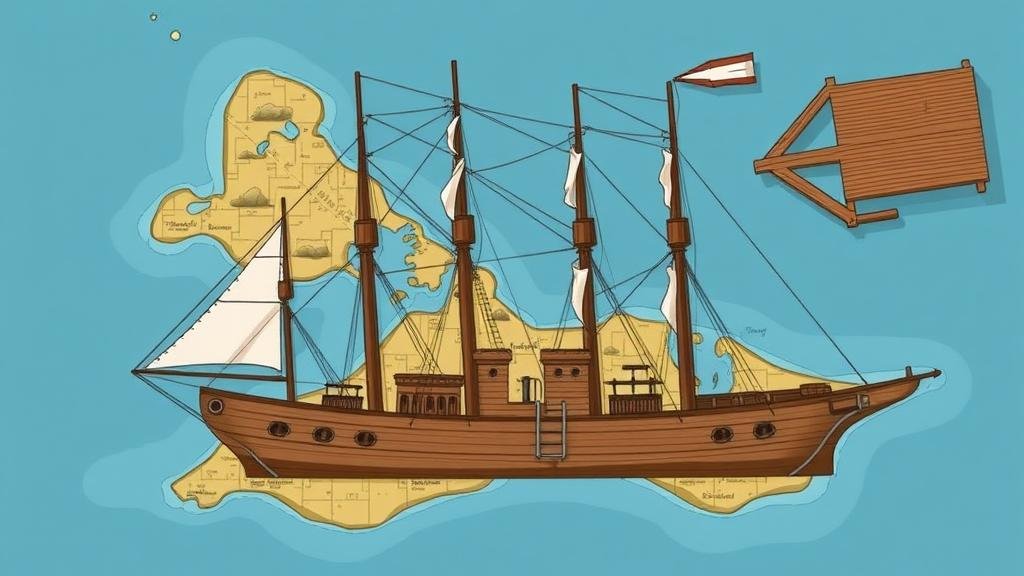Tracing Old Shipyard Construction Areas for Nautical Artifact Discoveries
Tracing Old Shipyard Construction Areas for Nautical Artifact Discoveries
The study of old shipyards and their construction areas is critical in understanding maritime history and technology. These sites not only yield artifacts that illuminate the past practices of shipbuilding but also provide insights into broader historical events and economic circumstances of their time. This article examines the methodologies employed in tracing old shipyard locations, the significance of these findings, and notable case studies that demonstrate the potential of such archaeology.
Historical Context and Importance
Shipyards have been pivotal in the development of maritime trade and naval power. For example, the Portsmouth Naval Dockyard in England, established in 1496, was integral to the British Royal Navys expansion. Historical research indicates that between 1750 and 1850, shipyards along the United States Eastern Seaboard produced vast numbers of vessels that supported the burgeoning economy and naval dominance.
Understanding these construction areas aids in recognizing not only the shipbuilding techniques and materials used but also the sociopolitical context of their operation. For example, sites like the Mare Island Naval Shipyard in California helped advance naval technology during the 19th century, underscoring the connection between industrial capabilities and military readiness.
Methodologies for Tracing Old Shipyard Sites
Identifying and tracing old shipyard construction areas requires a multifaceted approach that includes historical research, archaeological surveys, and advanced technological tools.
- Historical Research: Investigating historical documents, maps, and ship logs provides the foundational knowledge necessary for pinpointing shipyard locations.
- Archaeological Surveys: Systematic excavation and analysis of known shipyard sites can recover artifacts that represent the shipbuilding practices of the time.
- Geophysical Methods: Techniques like ground-penetrating radar (GPR) and magnetometry can reveal subsurface structures without major disturbances to the site.
- Remote Sensing: Aerial imagery and satellite mapping are increasingly utilized to identify site outlines and historical changes in land use patterns.
Significant Discoveries and Case Studies
Numerous case studies illustrate the effectiveness of these methodologies. One prominent example is the site of the historic shipyard in Bath, Maine, which dates back to the early 18th century.
In 2008, an archaeological team unearthed parts of a sunken ship believed to be a vessel built in the early 1800s. The excavation revealed hull components and historic tools, which were significant in understanding the shipbuilding techniques of that era. Such finds contribute to the narrative of America’s maritime past and influence ongoing shipbuilding practices.
Challenges and Considerations
Despite the potential for significant discoveries, tracing old shipyard sites poses various challenges. Environmental factors, urban development, and legal restrictions can impede access to sites. Plus, the interpretation of findings requires expertise in both maritime archaeology and historical context, making collaborative efforts essential.
For example, the preservation of the U-505 submarine in Chicago is complicated by its location in an urban environment. Continuous efforts to mitigate pollution and preserve artifacts highlight the necessity of interdisciplinary collaboration among historians, archaeologists, and environmental scientists.
Real-World Applications
The ramifications of tracing old shipyard construction areas extend beyond academic research. e efforts can inform present-day shipbuilding, contribute to cultural heritage preservation, and enhance maritime tourism. In many regions, the integration of discovered artifacts into museums provides a tangible connection to maritime history, thus enriching educational programs and community engagement.
Conclusion
The tracing of old shipyard construction areas is multifaceted, involving a blend of historical research, archaeological methods, and advanced technologies. Through reviewing significant case studies and addressing challenges, this field offers profound insights into maritime history and technology. Also, the findings from such endeavors have broad implications for modern shipbuilding practices, heritage preservation, and educational outreach.
The ongoing commitment to documenting and studying these sites is crucial to understanding our maritime heritage and ensuring its transmission to future generations.



